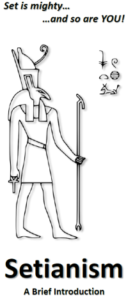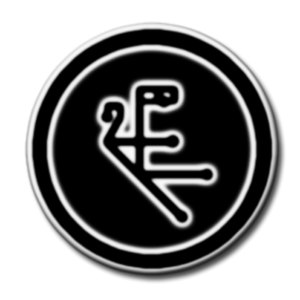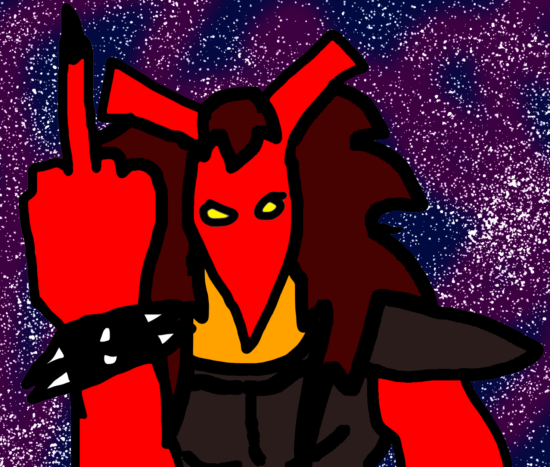The LV-426 Tradition of Setianism is a fusion of Kemetic polytheist theology with (Setianized) Western occult practices.
Recently a good friend of mine asked me, “What name do you call what you practice, if it fits into any one religion that has a name?”

The simplest and most direct answer to this question is that I identify as a Setian, a person who reveres and works to emulate Set. Given that Set is central to my entire spiritual life, I am Setian in the same way that Christ followers are Christians, or that Shiva devotees are Shaivites. I therefore think of what I do as a type of Setianism. (For more information on Setianism in general, check out Episode #1 of this series.)

But like the words “Christian” or “Shaivite,” there are some contexts in which the word Setian requires further explanation. Not all Christians or Shaivites believe or practice the same things, and neither do all Setians. I think it’s probably fair to say we are mostly divided into two major groups:
- Setians who are Kemetic polytheists, a term taken from Kemet or “Black Land” (the indigenous name for ancient Egypt). People in this category are more likely to believe Set is actually a real, living force of nature; that He is not “the Egyptian devil”; and that He deserves to be worshiped as a personal deity.
- Setians who are Western occultists, which means they take more of their inspiration from 20th century sources like Aleister Crowley. People in this category are more likely to think Set is somehow “separate from nature”; that He is “completely 100% opposed to Christianity”; and/or that “true” Setians bow to no Gods, not even Set.
And then you have people like me who blur the lines between these categories in certain ways. In my case, my theology and values are very much Kemetic; I treat the Netjeru (the Egyptian Gods) as literal beings, and I consider ancient Egyptian literature on Set to be more important than anything Kenneth Grant or Michael Aquino ever wrote about Him. Plus, my entire spirituality is aimed at actually revering and making offerings to Set, not on becoming some kind of “black magician.”
But at the same time, my ritual style—the way I specifically express my reverence for Set in ceremony and prayer—is very much influenced by Western occult sources. I was not yet aware of the Kemetic community when I first came to Set; I was only aware of His occultist followers at the time, and their ritual templates were the first to which I was exposed. I found such examples helpful, but could never quite buy into the claims that “worshiping Set is un-Setian” (!) or that “Set is a force ‘against’ nature” (?) or whatever. (This contradicted the fact that Setians in ancient Egypt very clearly did not believe EITHER of those things.) So in 1997, I started xeroxing all the rituals by Crowley and other occult writers I could find at my local library; then I would go home and repurpose these litanies to suit my devotional intentions.

A few years later, my friend the Tonester came to Set and asked for my help in learning how to worship. I showed him how I had been doing things up to that point, and we bonded because neither of us was impressed with the occult community in general. No one we knew who was into this stuff was really interested in worshiping anything but themselves. Many of these same individuals were also manipulative egomaniacs with absolutely zero regard for other people’s mental or emotional well-being. Seeking help or support from anyone was always treated as a “spiritual weakness”—like if you can’t just shake off all that depression or anxiety you’re living with, you can’t be a “real” Setian or something like that. So the Tonester and I both said, “FUCK dem apples; we’ll just start our OWN outfit.” And such is more or less how the LV-426 Tradition of Setianism began, back in 2003.

It wasn’t until sometime in the mid-2000s that I met any Kemetic polytheists or became aware of modern reconstructionist groups like the House of Netjer and the Church of the Eternal Source. Learning of this community really blew my mind; here were all these people who actually believed in worshiping the Egyptian Gods, and I hadn’t known about them this whole time! And I was impressed by the sheer amount of empathy that Kemetics just seem to feel for each other in general. Things might be different now than they were in the early 2000s; but back then, to speak of having suicidal feelings in a group of left-hand path occultists was to invite them to shame you into “just feeling better,” “getting up and doing something about it,” and/or “leaving if you can’t take the heat.” But to this day, I still see Kemetics supporting each other emotionally through such terrible struggles—something that anyone who claims to love the Gods of Egypt SHOULD be doing (YES, even if your patron Netjer is SET!). Despite any differences in my ritual style, I would much rather hang out with a bunch of Kemetics for an informal Moomas party than attend something like one of the Temple of Set’s annual conclaves.

In summary, the simplest term for my faith is Setianism; but if we want to get really taxonomical about it, my particular kind of Setianism (LV-426) is a unique fusion of Kemetic polytheist theology with (Setianized) Western occult ritual practices. We do not claim to be following “the one true way” of Set or anything like that; this is just OUR way, and others can take it or leave it. But one thing we LV-426ers will NOT tolerate is being told by any Social Darwinist occultniks that THEIR ways of “being Setian” are somehow more “accurate” or “legitimate” than ours. In absolutely any situation where this ignorant claim might arise, we will be sure to correct people accordingly (and mercilessly).
(To paraphrase Ozzy Osbourne: “Tell me I’m a phony? I got news for you: I spoke to Set this evening, and HE DON’T LIKE YOU!”)

As a final note, the LV-426 Tradition is a private fellowship, and membership is by invitation only. This is not because we want to be a “secret society”; it’s because we treat each other as family, and that is not a dynamic people can just develop by sending us a check and applying to join. It usually takes several years for someone we know personally to even realize they are one of us; then we have to all agree with each other before the candidate can be initiated. Sometimes when you’ve had a really bad week, it feels damn good to sob uncontrollably in the presence of Sutekh and your siblings in Him during one of our Sabbats. And this kind of atmosphere is most successful when there aren’t any “might is right” crotchgoblins around, trying to shame people for having problems and needing support.
But while we are extremely protective of whom we allow into our personal lives, we want to share the magic we’ve worked together so that others may benefit from it too. You don’t even have to join us or pay us to learn how we do things; hell, just read this damn website and take notes! If other Setians find our material useful but would like to make changes, I encourage them to do the same thing I did with Crowley or whomever and tinker with the work as they see fit. While I am in no hurry to expand my own coven, I do hope to hear of more like-minded Setian groups popping up across the globe some day.

